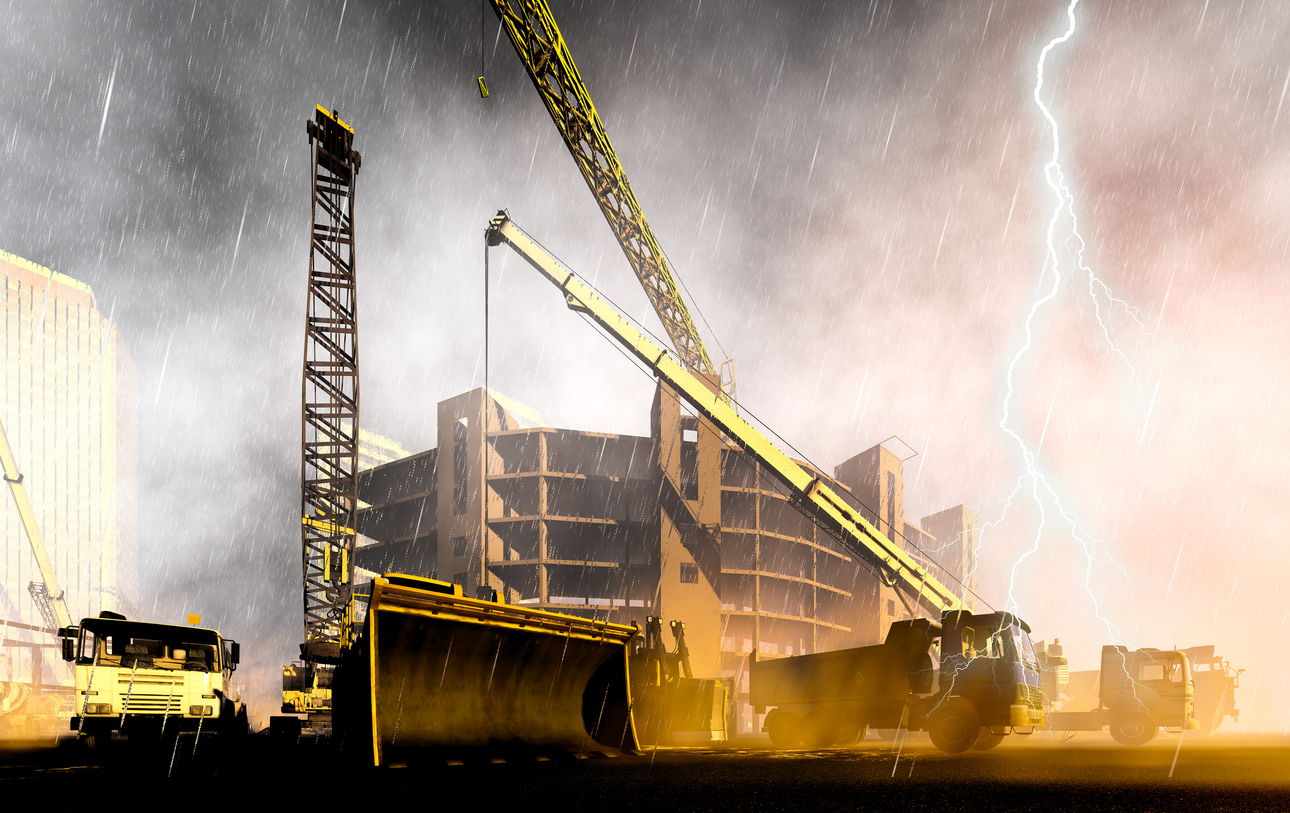An active 2024 hurricane season, beginning with Beryl, which hit the Caribbean and later Texas in early July, is predicted to cause significant property damage to impacted areas. According to Verisk, Beryl’s U.S. onshore wind losses could cost insurers up to $3 billion. The wind from Beryl damaged residential and commercial properties in Houston, Texas, and the surrounding areas. While damage to existing properties is of paramount concern, so is the potential devastation weather-related disasters can cause to buildings under construction.
Severe weather, in fact, plays a pivotal role in construction and can impact the progress of a project. Flooding, high winds, and other weather events can damage construction materials and equipment, leading to additional costs and delays. In addition, adverse weather can disrupt interior work by making the site inaccessible or forcing changes to the planned sequence of work. Water infiltration further risks compromising partially completed structures and stored materials.
Plan Ahead to Minimize Damage
Project managers and general contractors should have a risk-mitigation plan in place to minimize potential damage to buildings under construction or renovation and remodeling. The plan should include the following:
- Perform a comprehensive risk assessment to identify potential hurricane-related risks and develop mitigation strategies.
- Incorporate flexibility into project schedules to allow for adjustments in case of weather-related delays. If landfall is predicted within 24 hours, suspend all activities.
- Monitor weather forecasts to allow for proactive decision-making and adjustments to construction plans.
- Develop communication channels with construction workers, suppliers, clients, and other stakeholders.
- Prepare a checklist the heavy equipment, cranes, and construction materials that require protection ahead of a hurricane or storm. Take precautions to protect all work, materials, and equipment from exposure, including wind damage. For example, brace the building components. Roof panels on partially completed roofs should be anchored. Anchor, weld, or fasten any building envelope or roof panels that have not yet been fully erected, and consider covering major wall holes with tarps until windows, doors, or glass curtain walls are finished. Also, secure supplies in advance with tie-downs and banding materials and anchors.
To protect construction materials from flooding, if possible, store them inside, at elevated levels, or in waterproof containers. Or, have another location ready to protect all equipment and materials and allow for the time it will take to relocate everything.
- Install drainage systems and secure loose materials to help mitigate the impact of adverse weather conditions.
- Suspend all lifting activities. Ensure that cranes are parked in free swing mode.
- Once the hurricane has passed, assess the damage and secure the site to prevent theft of any equipment or supplies. Also, begin the cleanup process. Note that wet or damaged electrical panels, downed power lines that may still be active, and unstable structures are all potential hazards. Document the damage, notify the proper utilities, and call your insurance carrier to assess the damage.
About Seneca Insurance Companies
Seneca Insurance Companies provides Builder’s Risk solutions that address each customer’s needs. Our policies protect property owners, real estate developers, and general contractors with an insurable interest in a construction project, covering materials, equipment, and fixtures being permanently installed. We also offer mid-term Builder’s Risk policies, a unique product in the marketplace that is particularly useful if a construction project is delayed.
